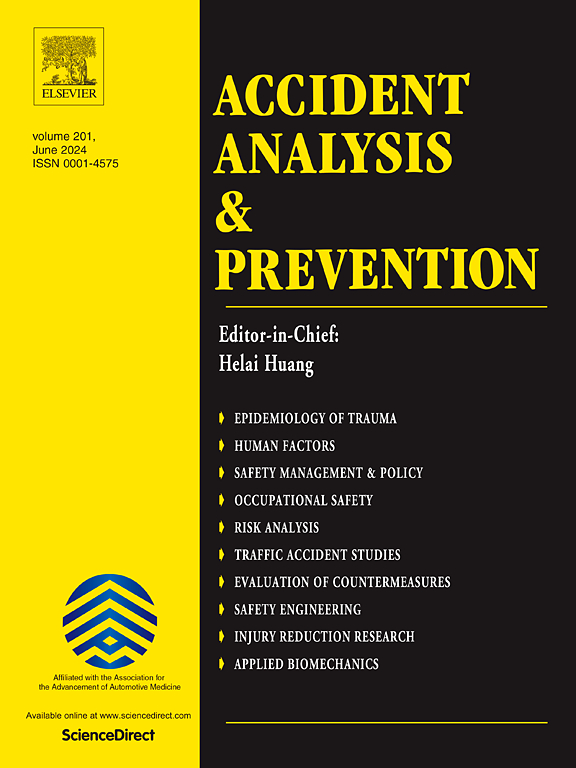Safety on the Line: Examining the impacts of crosswalk design on Child’s perceived Safety, cautious Behavior, and visual attention with VR Technology
IF 5.7
1区 工程技术
Q1 ERGONOMICS
引用次数: 0
Abstract
Although children are particularly vulnerable to accidents while crossing a street, knowledge about their specific perceptual and behavioral responses to crosswalk design and conditions is limited. By employing simulated virtual reality (VR) experiments, this study investigated how the environment of an unsignalized T-junction in a school zone influenced the perceived safety, crossing behaviors, and visual attention of 178 participants, consisting of younger (aged 8–10) and older children (aged 11–12) and their parents. Key findings from cross-classified multilevel, trajectory, and counterfactual analyses using Reproduced Virtual Experiment Data (CARVED) techniques for viewed scene comparisons are as follows. First, despite their physical and cognitive limitations, children—particularly younger ones—exhibited fewer attentive behaviors on sidewalks and roadways, along with a higher informal crossing ratio than parents. Second, responses to environmental conditions varied by developmental stage. While older children and parents generally responded to hazardous conditions with increased caution, younger children exhibited minimal behavioral adjustments. For example, parents perceived environments with parked cars as less safe and demonstrated more attentive and preventive behaviors on roadways. In contrast, younger children, despite having their line of sight obstructed, failed to recognize these hazards and did not adopt compensatory strategies, reinforcing their vulnerability. Similarly, only older children and parents perceived decorative crosswalk patterns as less safe than traditional ones. Third, while traditional crosswalks facilitated orthogonal crossings and provided clearer guidance for safer movements, decorative patterns often encouraged diagonal and dispersed crossings, resulting in a higher jaywalking ratio. Lastly, speed limits showed no significant influence on perceived safety or crossing behaviors. These findings highlight the critical influence of developmental stages on safety perceptions and behaviors, emphasizing the need to reassess crosswalk designs and address visibility challenges caused by illegal on-street parking to enhance child pedestrian safety.
求助全文
约1分钟内获得全文
求助全文
来源期刊

Accident; analysis and prevention
Multiple-
CiteScore
11.90
自引率
16.90%
发文量
264
审稿时长
48 days
期刊介绍:
Accident Analysis & Prevention provides wide coverage of the general areas relating to accidental injury and damage, including the pre-injury and immediate post-injury phases. Published papers deal with medical, legal, economic, educational, behavioral, theoretical or empirical aspects of transportation accidents, as well as with accidents at other sites. Selected topics within the scope of the Journal may include: studies of human, environmental and vehicular factors influencing the occurrence, type and severity of accidents and injury; the design, implementation and evaluation of countermeasures; biomechanics of impact and human tolerance limits to injury; modelling and statistical analysis of accident data; policy, planning and decision-making in safety.
 求助内容:
求助内容: 应助结果提醒方式:
应助结果提醒方式:


